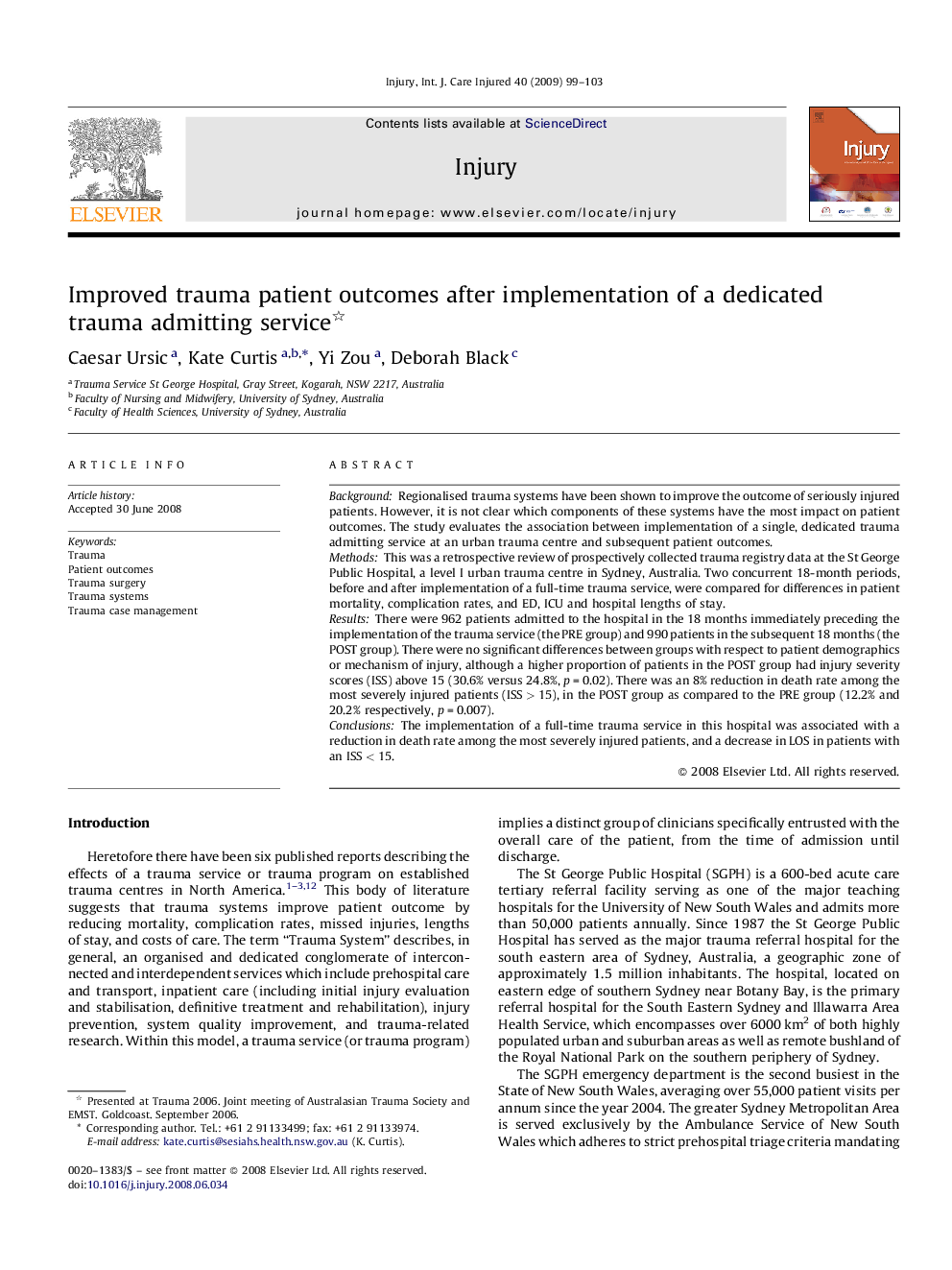| Article ID | Journal | Published Year | Pages | File Type |
|---|---|---|---|---|
| 3241557 | Injury | 2009 | 5 Pages |
BackgroundRegionalised trauma systems have been shown to improve the outcome of seriously injured patients. However, it is not clear which components of these systems have the most impact on patient outcomes. The study evaluates the association between implementation of a single, dedicated trauma admitting service at an urban trauma centre and subsequent patient outcomes.MethodsThis was a retrospective review of prospectively collected trauma registry data at the St George Public Hospital, a level I urban trauma centre in Sydney, Australia. Two concurrent 18-month periods, before and after implementation of a full-time trauma service, were compared for differences in patient mortality, complication rates, and ED, ICU and hospital lengths of stay.ResultsThere were 962 patients admitted to the hospital in the 18 months immediately preceding the implementation of the trauma service (the PRE group) and 990 patients in the subsequent 18 months (the POST group). There were no significant differences between groups with respect to patient demographics or mechanism of injury, although a higher proportion of patients in the POST group had injury severity scores (ISS) above 15 (30.6% versus 24.8%, p = 0.02). There was an 8% reduction in death rate among the most severely injured patients (ISS > 15), in the POST group as compared to the PRE group (12.2% and 20.2% respectively, p = 0.007).ConclusionsThe implementation of a full-time trauma service in this hospital was associated with a reduction in death rate among the most severely injured patients, and a decrease in LOS in patients with an ISS < 15.
